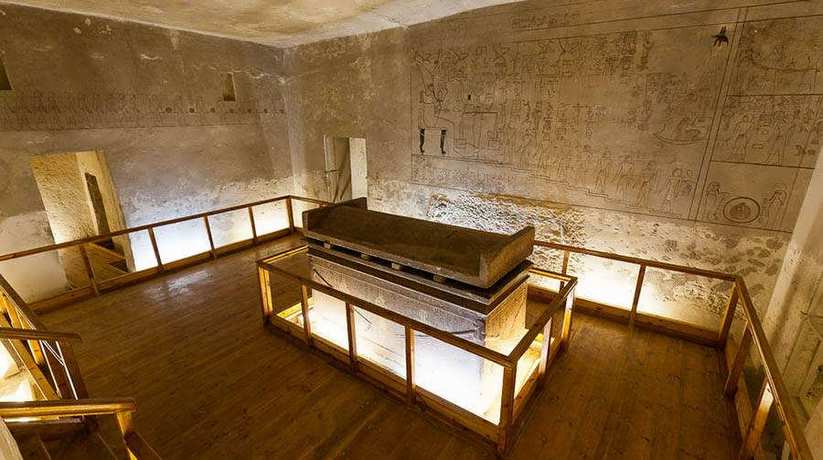Horemheb tomb Luxor Egypt tours, prices, booking, reviews
Horemheb tomb Luxor Egypt KV 57 discovered by a young British Egyptology man named Edward Ayrton. It was in 1908. Horemheb was the successor of Ay, who in turn, had succeeded Tutankhamun as pharaoh of Egypt. He actually not related to the earlier kings of the 18th dynasty. Though he served in the courts of first Amenophis IV, and then Tutankhamun and finally Ay. Horemheb was a royal scribe and general of the armies at various times. He restored the old worship of Amun. Furthermore, he also reconstructed the provincial administration and military cadres. Horemheb tomb Luxor filled with rubble. Moreover, it washed in by the infrequent rain over the past thousands of years. Another two days required to clean the rubble from the tomb itself. It was after removing the debris from the entrance.
Unfortunately, much of the funerary equipment was in pieces due to the rubble. In his tomb, Horemheb developed several innovations. They would carry on from the 18th into the 19th dynasty tomb builders. The tomb does not have the right angle between the end of the descending corridor. This angle found in earlier 18th dynasty tombs. Horemheb tomb Luxor Egypt features painted bas-reliefs. It is instead of the simple paintings which found in earlier tombs. Horemheb inscribes passages from the Book of Gates on walls rather than those from the Amduat. The Book of Gates is a religious composition. It is about the “gates” that separate the night’s twelve hours.
Further details about Horemheb tomb Luxor Egypt:
In fact, there are many of idiosyncrasies in the tomb which never repeated. These include a slope in the burial chamber from the first pair of pillars to the steps of the “crypt”. A second set of stairs leads to the crypt and a lower storeroom beneath the burial chamber’s annex. Entering Horemheb tomb Luxor, the first stairway down ends in a corridor. It leads in turn to a second stairway and a second corridor. Finally, one arrives at the first room with a shaft. On the walls of the shaft are paintings of two groups of deities. The first group is Hathor, Isis, Osiris and Horus on the left. Hathor, Anubis, Osiris and Horus to the right. Here, Isis replaces the goddess Nut which found in earlier tombs. Decorations, as in earlier tombs, limited to this shaft.
The antechamber and the burial chamber are proper. The painting in Horemheb tomb Luxor much more sophisticated than many earlier tombs. They produced by more skillful artists. They vary the stances, gestures and clothing of the figures. There is also an extensive use of color. In fact, it features multicolored hieroglyphs and blue-green backgrounds. From here, Horemheb leads to a two-pillar hall and then to a third corridor and finally a vestibule. The burial chamber with its six pillars and four lateral and one back annex are next. The annexes used to store funerary equipment. In fact, the king’s large, red granite sarcophagus and the walls are in the burial chamber. Walls painted with the fifth division from the Book of Gates, including a figure of Osiris.
More details about Horemheb tomb Luxor Egypt:
The sarcophagus is interesting from the standpoint. It incorporates features both from before and after the Amarna period, making it transitional. The gable-ended lid is completely unique. In fact, there was considerable funerary equipment which found within the tomb. Some wooden (cedar and acacia) images, broken by the rubbish discovered. Also smashed were alabaster canopic jars. It features portrait-headed stoppers and four miniature lion-headed embalming tables. Other items of funerary equipment included.
Entrance to Horemheb tomb Luxor Egypt:
The tomb opened in April 2002. Ticket for the Valley of Kings cost 80 Egyptian pound for three tombs. It includes Horemheb tomb Luxor. It can bought at the gate. Photography inside the tombs strictly forbidden and can incur heavy fines. There is a little train – Taftaf – that runs from the coach park to the entrance to the monument area. It costs 5 Egyptian pound.















